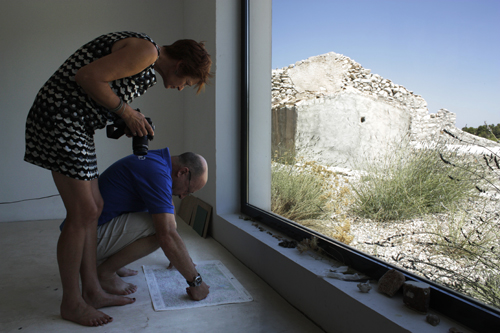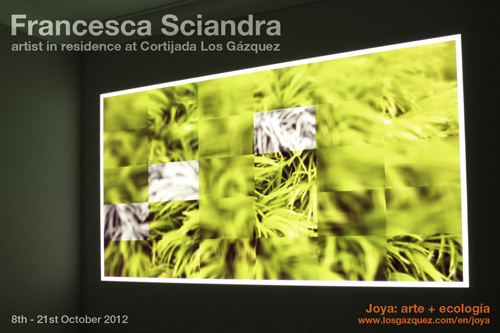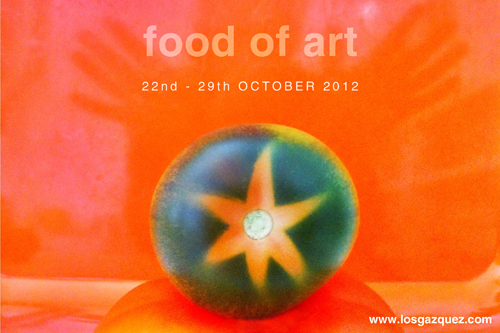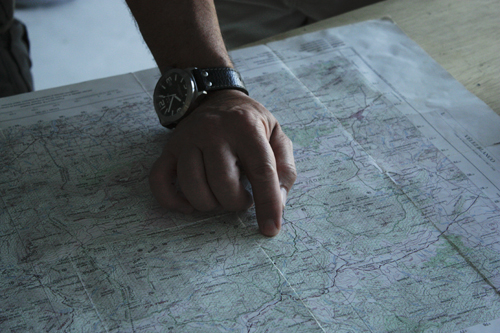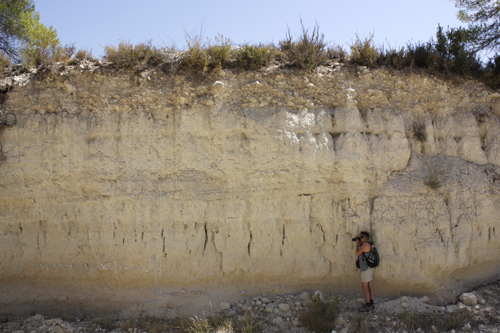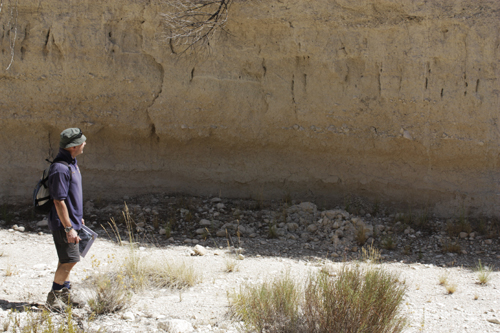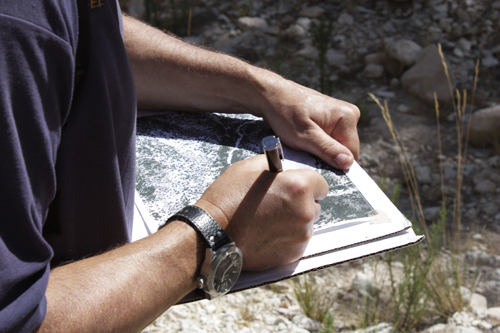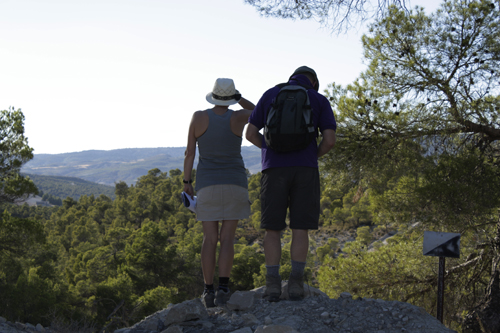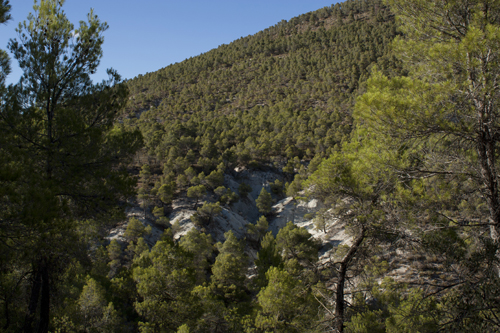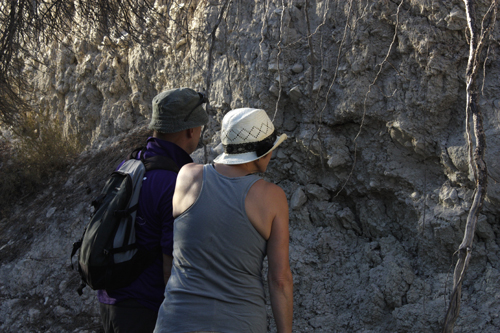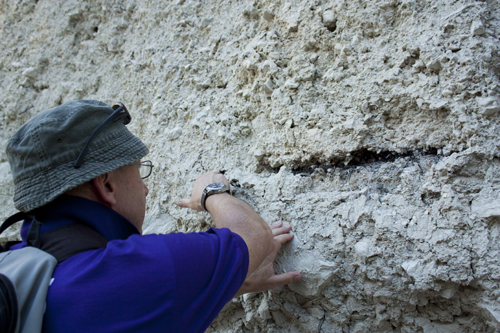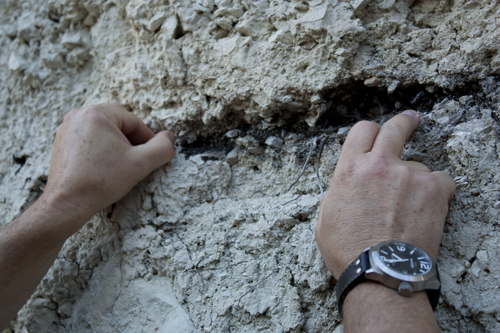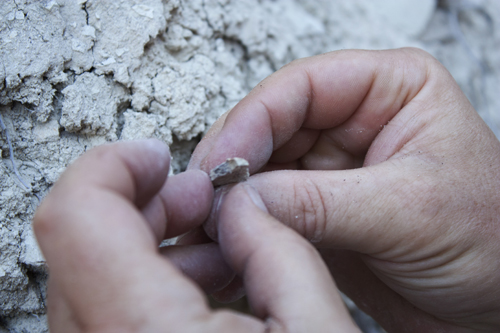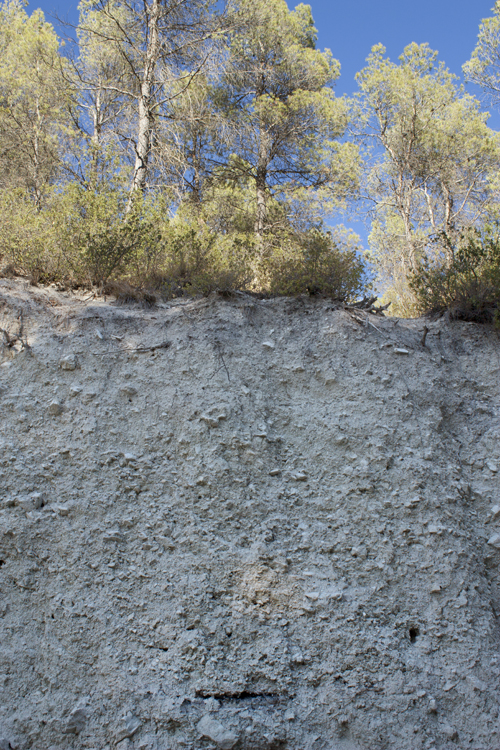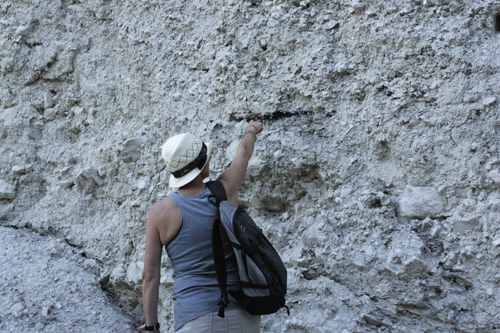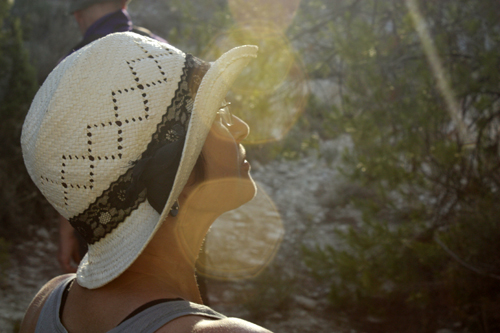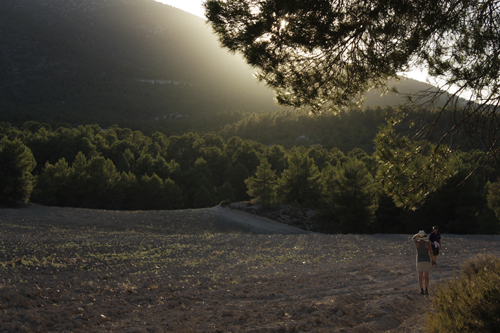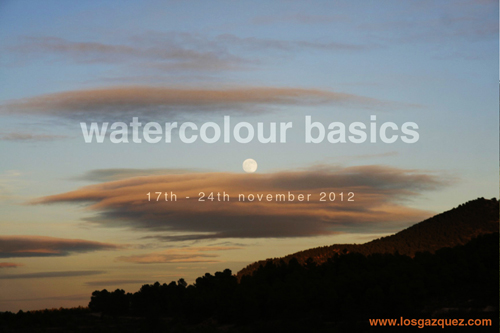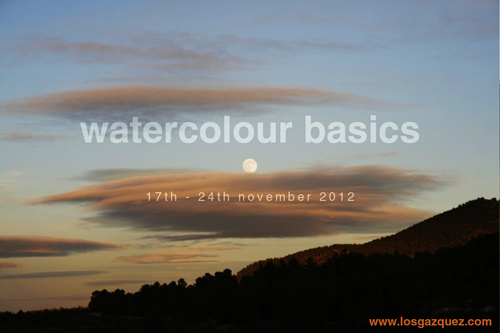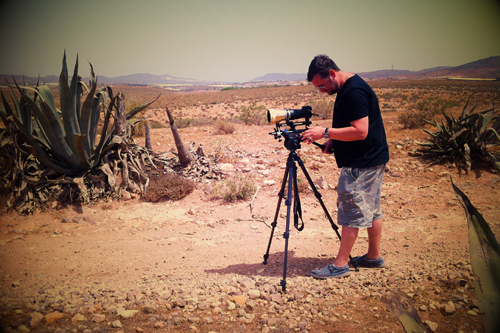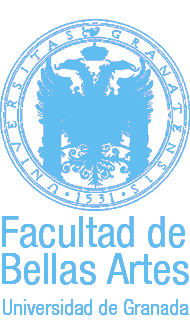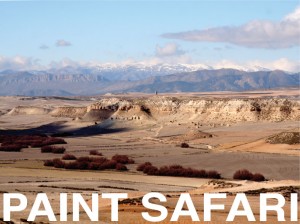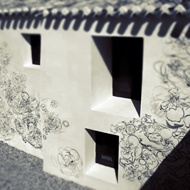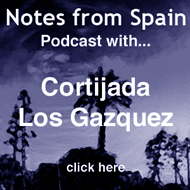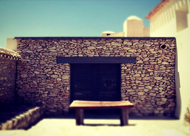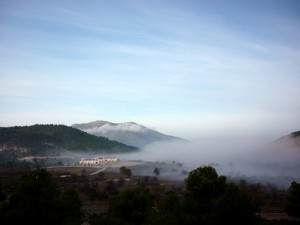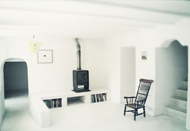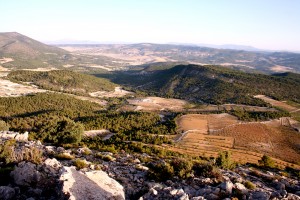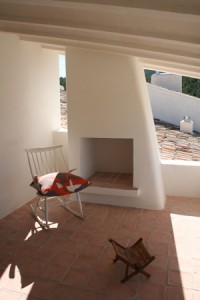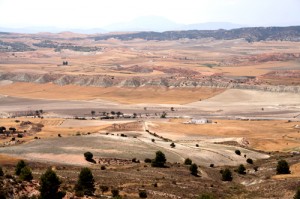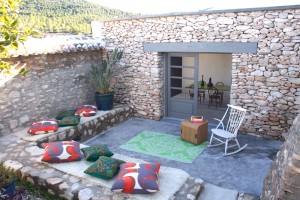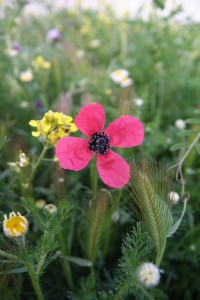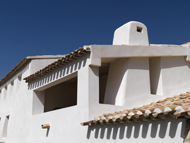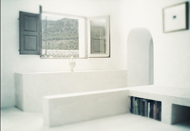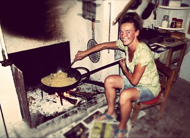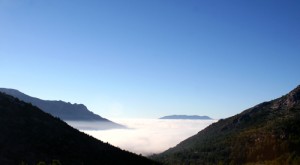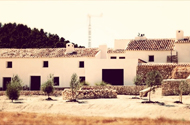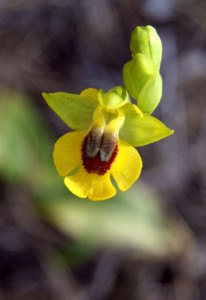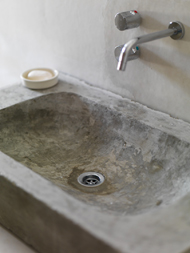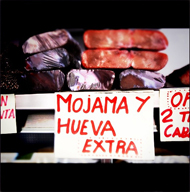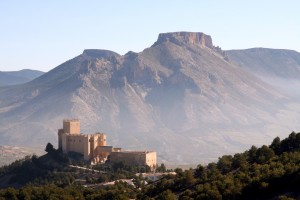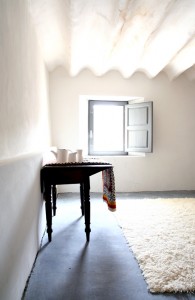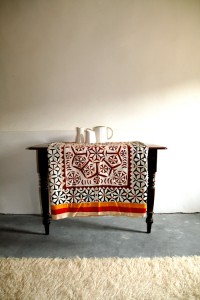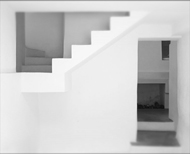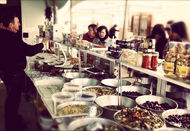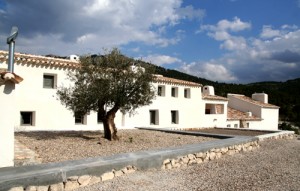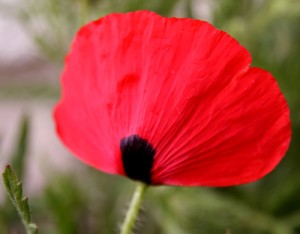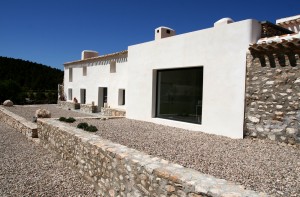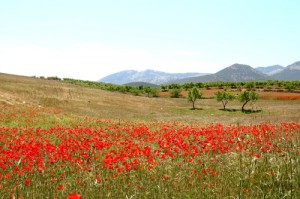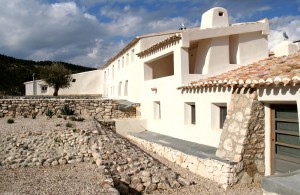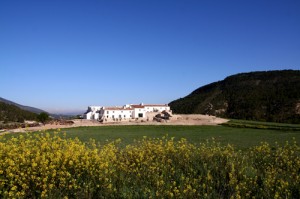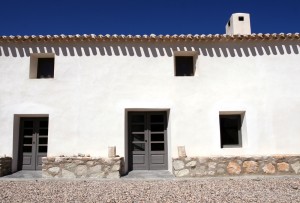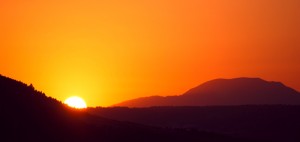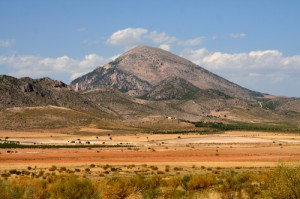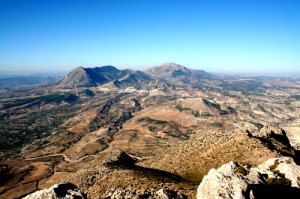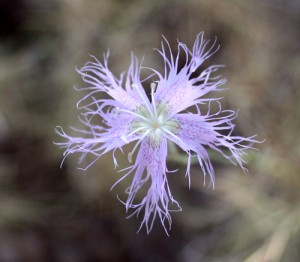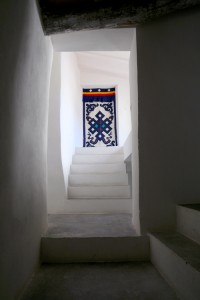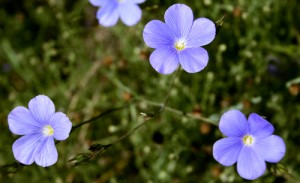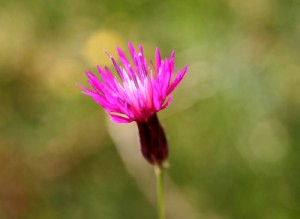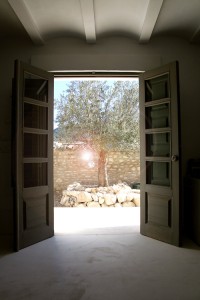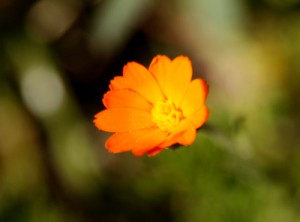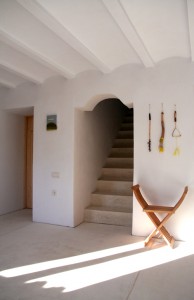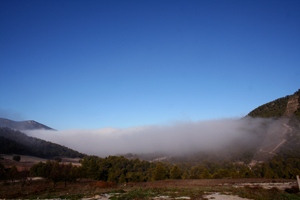Joya: resident artists / Jude and Professor Mark Macklin / 29th August
(Texto en español al final del artículo)
“Day 4, 29th August 2012
A remarkably productive day in the lab - a.k.a. the studio - transcribing field maps and notes onto final copy Google Earth base templates. Pleased with the interpretative geomorphological maps, which will underpin the prints that Jude is producing over the next 5 or 6 days. I’ve been studying river landforms and deposits for 34 years, deciphering environmental signals left in the landscape by climate change, tectonics, as well by human management and mismanagement of ecosystems. All of these themes can be explored in dryland river systems but what makes the Mediterranean region unique compared to similar climatic regions of South America, South Africa and Australia is the very long history of farming and its cumulative environmental impact. From the perspective of landscape interpretation and landscape history this presents a challenge in trying to differentiate between change caused by ‘natural’ processes such as climatic variability and those resulting from anthropogenic activity. This is not only important from an academic perspective but also for environmental management because incorrectly identifying the presumed cause of change and instability in river catchments can result in very costly and ineffective remediation and ‘restoration’ programmes. An understanding of long term (or as many environmental historians call it ‘deep time’) river behaviour and rates of change should always underpin sustainable land-use and water resource development; unfortunately, it rarely does. It was interesting for me that Jude has selected small parts - in effect samples - of my geomorphological maps highlighting the fractal nature of landscapes, particularly those produced by running water. Moreover, she has decided to juxtapose representations of those parts of the Rambla de la tia Polonia catchment that have been completely transformed by human action (primarily through the construction of agricultural terraces) with the more ‘natural’ riverscapes that are found along the Ramblas. This elegantly mirrors the long running geomorphological debate of ‘man versus nature’ as agents of change in Mediterranean catchments. Locally, many channels have been modified by the construction of stone/concrete bed-check weirs or dams designed to prevent river bed and bank erosion as well as to control and moderate sediment delivery and sedimentation in lower parts of the catchment. In the Rambla del Cajar, a major east bank tributary of the Rambla de la Tía Polonia, there is evidence that these structures have been repeatedly destroyed either by undermining by flood water or by bank collapse. They appear to be ineffective in controlling erosion in these catchments, which are primarily used for forestry. A river terrace 2-3 m above the bed of the modern channel, that grades into an extensive network of gullies many of which are now inactive, indicates that erosion rates have been much higher in the recent past (the last few centuries). So the erosion ‘horse’ has already bolted but the catchment managers don’t know it! Enter knowledge and appreciation of deep time river dynamics!!”
Prof. Mark Macklin
You can find out more on Jude and Mark Macklin’s residency here.
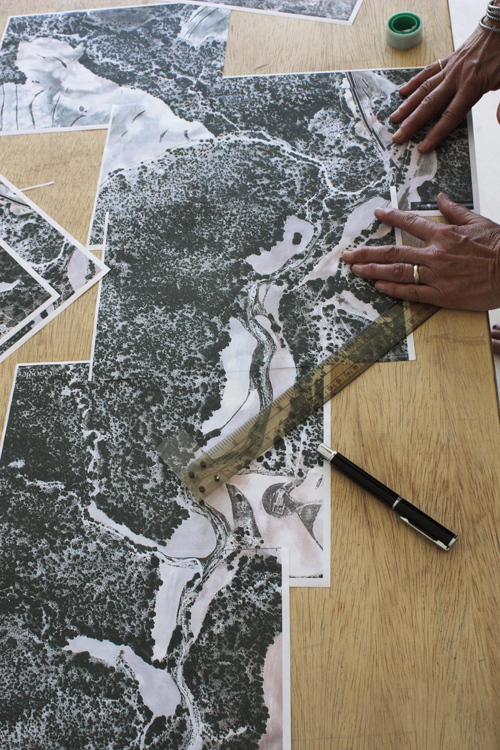
“Día 4, 29 de agosto de 2012
Un día extraordinariamente productivo en el estudio/laboratorio transcribiendo mapas y notas de campo sobre una copia final de las plantillas de Google Earth. Estoy satisfecho con los mapas geomorfológicos, que apuntalarán los grabados que Jude estará haciendo durante los próximos 5 ó 6 días. He estado estudiando los accidentes geográficos y depósitos durante 34 años, descifrando las señales medioambientales dejadas en el paisaje por el cambio climático, la tectónica, así como por el uso y mal uso que el ser humano ha hecho de los ecosistemas. Todas estas cuestiones pueden ser exploradas en los sistemas fluviales secos, pero lo que convierte a la zona mediterránea en única en comparación a zonas climáticas similares de Sudamérica, el sur de África y Australia es la larguísima historia agrícola y su impacto medioambiental acumulativo. Desde la perspectiva de la interpretación del paisaje y la historia del paisaje esto supone un reto a la hora de intentar diferenciar entre el cambio originado por procesos “naturales” como la variabilidad climática y aquellos que son el resultado de la actividad humana. Esto es importante no sólo desde una perspectiva académica sino también para la gestión medioambiental porque identificar incorrectamente la presunta causa del cambio e inestabilidad en las cuencas de los ríos puede dar como resultado programas de remediación y “restauración” muy costosos e inefectivos. La comprensión del comportamiento fluvial en el largo plazo (o como muchos historiadores medioambientales lo llaman, “deep time”, “tiempo profundo”) y de los ritmos de cambio siempre debería ser la base del uso sostenible del terreno y el desarrollo de los recursos hídricos, desgraciadamente, raramente lo es. Ha sido interesante para mí que Jude haya escogido pequeñas partes (o muestras) de mis mapas geomorfológicos destacando la naturaleza fractal de los paisajes, particularmente de aquellos producidos por el agua corriente. Además, ha decidido yuxtaponer representaciones de las partes de la cuenca de la Rambla de la Tía Polonia que han sido completamente transformadas por la acción humana (principalmente por la construcción de terrazas agrícolas) con los paisajes fluviales más “naturales” que se encuentran junto a las Ramblas. Esto refleja de una manera elegante el alargado debate geomorfológico de “hombre vs naturaleza” como agente de cambio en las cuencas mediterráneas. Localmente, muchos cauces han sido modificados por la construcción de diques de piedra o cemento diseñados para prevenir la erosión de la ribera así como para controlar y moderar la distribución de sedimentos y la sedimentación en las partes más bajas de la cuenca. En la Rambla del Cajar, un importante afluente oriental de la Rambla de la Tía Polonia, hay evidencias de que estas estructuras han sido repetidamente destruidas ya sea por socavación de las riadas o por el colapso de la ribera. Parecen ser inefectivos a la hora de controlar la erosión en estas cuencas, que se usan principalmente para la forestación. Una terraza fluvial a 2-3 m sobre la base del cauce actual, que deriva en una extensa red de barrancos muchos de los cuales están ahora inactivos, indica que la velocidad de la erosión fue mucho más alta en el pasado reciente (hace unos pocos siglos). De manera que la erosión ya ha comenzado, ¡pero los responsables del cuidado del cauce no lo saben! ¡Hay que conocer y comprender las dinámicas fluviales en el largo plazo!”
Prof. Mark Macklin

